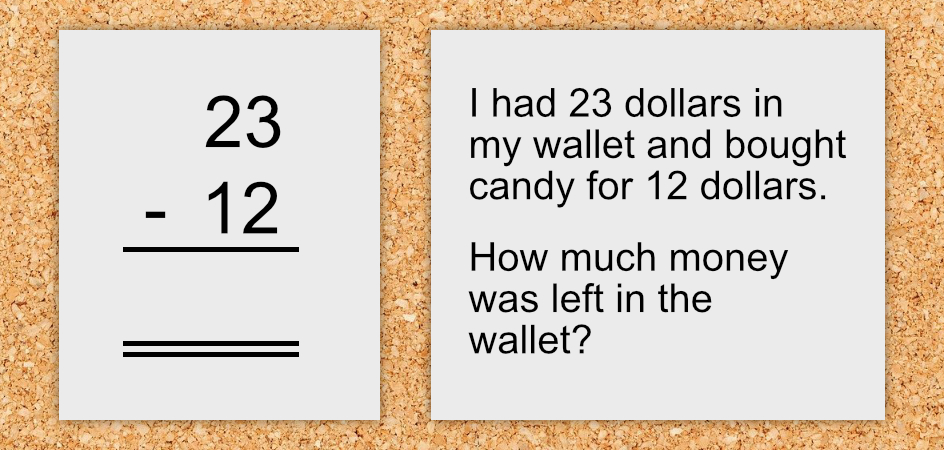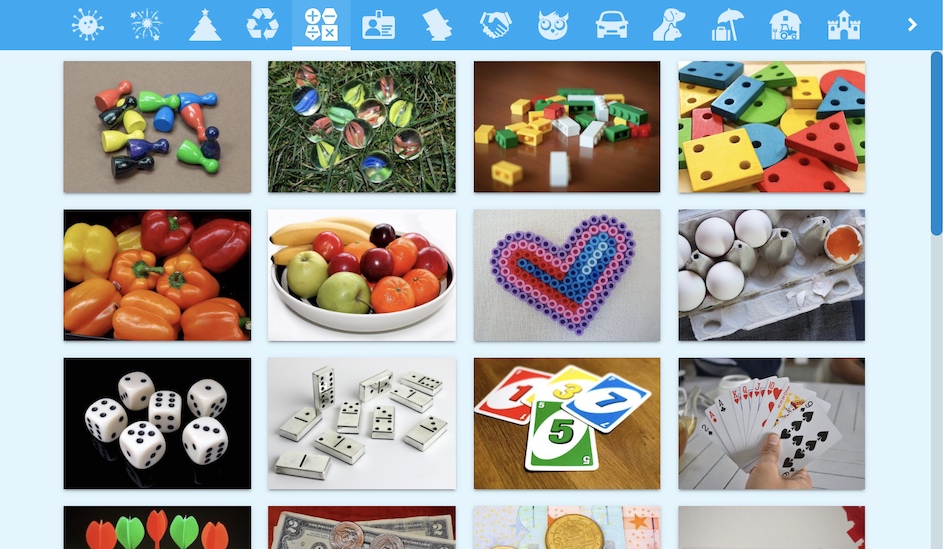Reading aloud math stories has been a well known and effective way to introduce abstract math problems to young children and to make math more relevant to their everyday lives. This blog post is all about how working with math stories in elementary school can be even more effective, meaningful and motivating by turning the students into authors of their own math books.
Active creators and learners
Most of us feel more engaged and better remember what we have learned by being involved in the whole process, connecting to our personal experiences and making something to demonstrate our learning–and mathematics is no exception. When it comes to math we actually quite often see that students learn a method by heart without really understanding what they are doing. Maybe you are familiar with a situation where a child can easily solve the math problem “23 – 12” when presented as below. But when expressed as a math story or real life situation they don’t know what type of arithmetic operation (addition, subtraction, multiplication, and division) to use and what number to put on top.

When students are involved in the whole process of creating math stories (idea, wording, answer and arithmetic expression) they will be forced to think “behind” the task itself. That means that the students gain skills from all phases which enables them to connect abstract arithmetic expressions and everyday math situations.
Meaningful and motivational
In addition to the valuable background knowledge and connections between mathematics and everyday situations, math stories also play an important role when it comes to motivation. Math stories serve a deeper purpose and give students the opportunity to create value for their classmates–something that is often quite difficult to achieve when teaching mathematics.
After the self-created math stories have been made (and reviewed by the teacher or classmates), they can be shared and used in the classroom just like publisher-produced math stories. It is impossible to buy math stories anywhere that are more relevant and motivating for students to solve and learn from than the ones created by your students!
Creating math stories with WriteReader
Based on an ongoing research project (Learning of Science and Math Concepts Through Book Creation in Primary School) and a newly added WriteReader image bank category, below you will find a 7-step guide for working with math stories in your classroom.

1. Select a math topic, standard or skill
Could be related to the current skill being taught in the class, or a skill students need to review & practice (addition, subtraction, multiplication, division, geometry, measurement …)
2. Ensure students are familiar with vocabulary relevant to the topic or skill
For the concept of “addition” vocabulary could include: add, and, sum, plus, increase, and total.
3. Define the framework/structure of the book
Here are some ideas:
- create the cover with book title, author name and a relevant image
- make only one math story per page
- don’t include the answer on the same page as the story
- make an answer key in the back of the book (example shown below)
- in the answer key, write the equation and solution to each problem

4. Show students a related math story example
Create one yourself in WriteReader or find a publisher-produced example in your math curriculum.
5. Make students write their own math stories
It’s very important that the students only make stories that they can solve themselves. Students can add images using the math image bank, or upload photos of their own creations to illustrate their stories.
6. Check students’ math stories
Check the stories yourself or let students work in pairs to check each other’s stories.
7. Share and solve students’ books/math stories
… and let them solve each other’s math stories. The books/stories can either be:
- read directly in the WriteReader app and solved on a piece of paper (choose the “Class books” setting on the bookshelf)
- printed and handed out to the students as small home made math books
- presented on the class projector (2-3 a day over a period of time)
